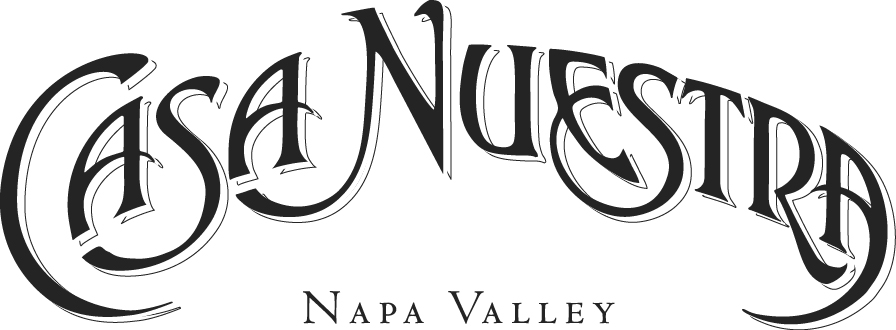Oakville farmhouse vineyard
The story of Casa Nuestra began even earlier than 1975. It began in 1955, when the Happy Farmer’s mother, Ellis Kirkham, fell in love with the Oakville countryside and purchased the Oakville Farmhouse Vineyard intending to use it as a summer refuge from foggy San Francisco. At the time vineyards in Oakville were a rarity and some famous vineyards which now surround it – such as Martha’s Vineyard, Far Niente, Screaming Eagle and Harlan, were plum orchards or cow pastures.
The small Farmhouse vineyard had been planted with a 'field mix' of a few varietals in the 1920s by an Italian immigrant named Tony Delazer. He didn’t simply plant a homogenous field of grapes, rather, he planted a collection of nine grape varietals which became a 'wine recipe planted in the ground,' reflecting the traditional Old World practices that were common several generations ago in his Italian homeland. The vines were planted on phylloxera-resistant St. George rootstock, were head-trained, and not irrigated.
Field mixes like this used to be common in the Napa Valley. It was due to the industry’s growing desire for commercial, single-grape vineyards that these vineyards too quickly disappeared.
The Oakville Farmhouse field mix included some well-known varieties, such as Petite Sirah, Zinfandel, Carignan and Mourvèdre, as well as more rare Refosco, Alicante Bouschet, and Napa Gamay. There were also a few Muscadine vines; but the grapes were so sweet that they rarely made their way into the wine. Finally, there was a mystery grape which puzzled everyone who walked in the vineyard. We eventually took the cuttings to UC Davis for a DNA analysis. The mystery grape turned out to be Négrette!
For 25 years we sold the fruit from the Oakville vineyard through the Napa Valley Co-op as “mixed blacks," until we experimented with a proprietary ‘Tinto’ blend in 1980. The wine was an immediate success with our customers, and has stayed our best-selling wine ever since.
In 1992, in anticipation of selling the Oakville property and to keep the history alive, we recreated the Tinto vineyard at Casa Nuestra by taking cuttings from the Oakville vines and T-budding them, vine by vine, to a portion of our existing vineyard in St. Helena. Wines from the cloned vineyard in St. Helena are labeled “Tinto St. Helena," while wines from the original Oakville stand are labeled “Tinto Classico Oakville.”

